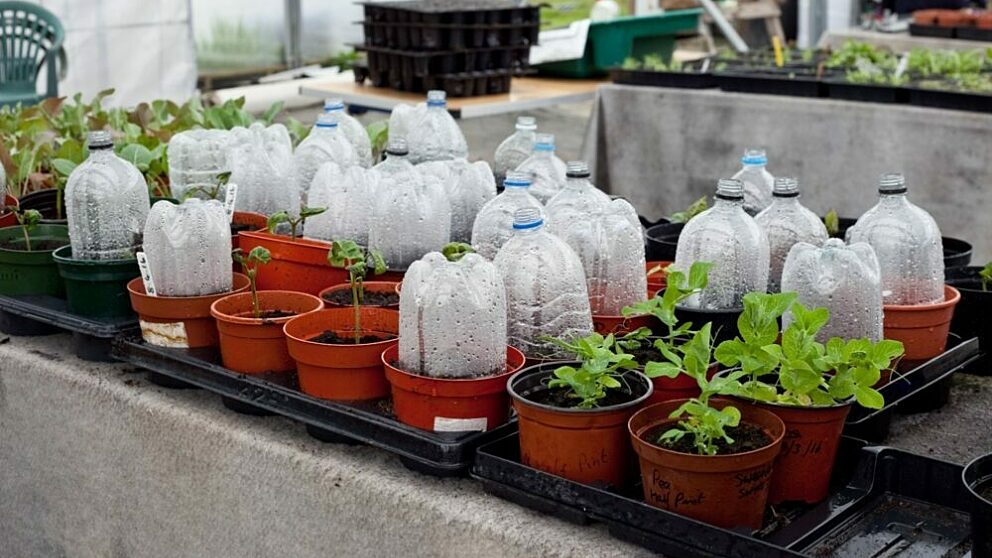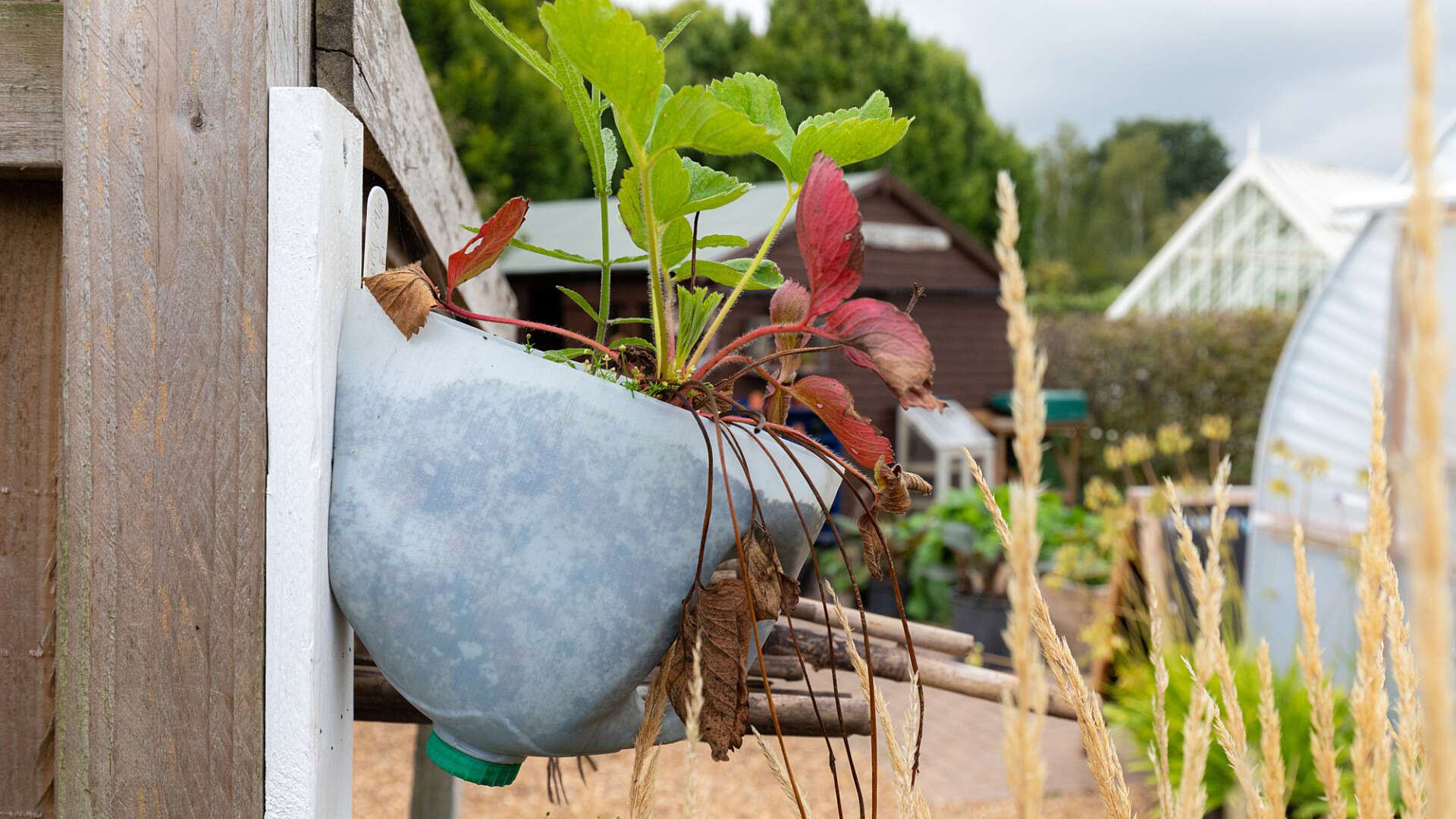
Use of plastic in your organic garden
Try to reduce the amount of plastic you use, always reuse it if possible, and check that it can be recycled.
- Tags
- General gardening Advice Recycling
It can be very easy to collect a lot of plastic as a gardener as you buy and use trays, pots, watering cans and cloches. But these items can all have an impact on the health of our gardens and the planet.
Problems with plastic
While it might be valued for its durability and flexibility, plastic is considered a non-renewable resource and during its manufacture and disposal, destroys and poisons our environment.
Black plastics in particular cannot be recycled. Black pigments are not picked up by the laser beams in most recycling facilities and this means most local authorities don't accept black plastic objects.
With an estimated 500 million plastic pots and trays in circulation in the UK, something has to change. Here at Garden Organic, we always check the plastic we buy is recycled or recyclable. Better still, we try to reduce the amount of plastic we buy in the first place and reuse the pots and containers we already have.
Guide to plastics in the growing area
There are seven types of plastics commercially processed and sold. They are all made from polymers, usually sourced from petrochemicals, with a few made from plant starches such as bioplastics.
The following guide will help you decide if you want to use, reuse, or not use them in your growing area:
- PETE or PET bottles. Used in most clear drinks bottles and salad trays.
Pros: Can be adapted for use as cloches on tender young plants. Recyclable. Cons: Many bottles are produced for single use, and therefore can break down with continued use and exposure to light or heat, leaving residues in the soil. They’ve also been found to leach chemicals if exposed to high temperatures.
- HDPE (high density polyethylene). Used for “cloudy” milk and detergent bottles.
Pros: Can be used as bird deterrents, and as water or liquid feed carriers. Recyclable. Cons: Hard to break down.
- PVC (polyvinyl chloride). Used extensively as a rigid, light plastic in water pipes, wheelbarrows and tools.
Pros: Durable and hard to break down. Cons: Constant exposure to heat will cause chemicals to leach. PVC often has chemicals called ‘phthalates’ added to make it more durable and flexible. Research has shown that phthalates affect our natural hormones and can lead to reproductive abnormalities. Not generally recyclable or needs specific recycling processes.
- LDPE (low density polyethylene). Used in shrink wraps, food storage bags and squeezy bottles.
Pros: Commonly used in the garden as potting compost bags and polytunnel covering. Reusable. Cons: Not usually recyclable and can break down overtime with heat and light.
- PP (polypropylene). Used in rigid containers such as yoghurt pots, margarine containers and microwavable meal trays.
Pros: good resistance to wear and tear when used in flowerpots, plant trays, ropes and netting. Can be reused and is generally recyclable. Cons: Black versions cannot be recycled.
- Polystyrene. Used in food and beverage takeaways, non-cardboard egg cartons and CD/DVD cases.
Cons: Styrene is classified as a possible human carcinogen by the International Agency for Research on Cancer (IARC). It should be avoided for use in the garden. Not generally recyclable and needs specific recycling processes.
- Bioplastics. Made from renewable resources such as vegetable fats and oils or plant starch.
Pros: They have an advantage over petrobased plastics in that they use less fossil fuel in their production and will degrade more readily. Some are compostable; however, they often need sufficient heat (and time) before rotting down. Cons: Research is ongoing as to the residues they leave when biodegraded.

Seven ways to reduce your garden plastic use
- Wash and reuse plastic pots, but when you have to replace - go for alternatives such as wood, terracotta, stone, glass and natural fibres such as coir for pots and containers. You can make small pots for seedlings out of newspaper, and toilet rolls are a good replacement for module trays for seeds such as peas and beans.
- Wipe clean plastic labels with an alcohol rub, and if you need to buy new - try cheap-and-cheerful used lollipop sticks or wooden cutlery.
- Tie plants with natural twine rather than plastic string.
- Instead of using plastic sheets for mulching, which can shed as they age, use thick layers of cardboard and newspaper, and/or organic matter, such as well-rotted garden compost or manure.
- Buy peat-free compost in bulk or use refillable bags. Many companies now offer refillable compost bags at garden centres, such as Melcourt’s ‘Bag for Life’. Better still – make your own compost so you can reduce how much you buy in!
- Make your own fertiliser. Using plants such as nettles and comfrey to make your own homemade plant food means you’re not buying plastic bottles.
- Put pressure on retailers to reduce their plastic footprint. Ask your garden centre to source fibre or bioplastic pots. They need to know that they will only get your support as a customer if they change their attitude to plastic. Ask your shops and garden centres to provide recycling facilities for black flowerpots and trays.